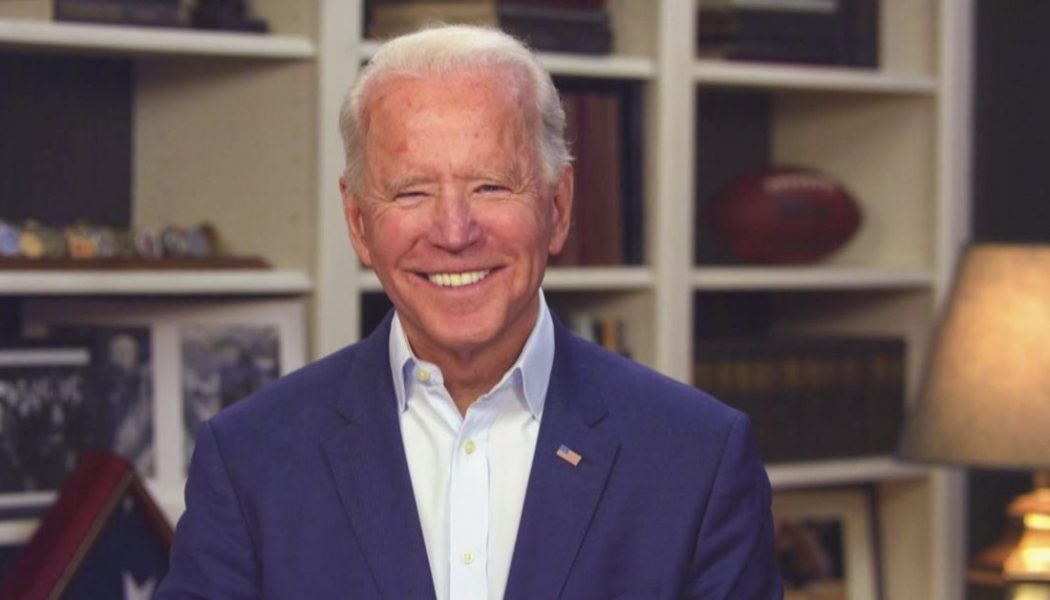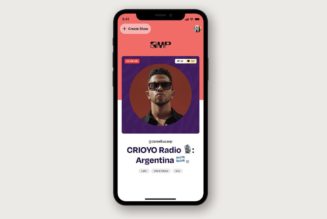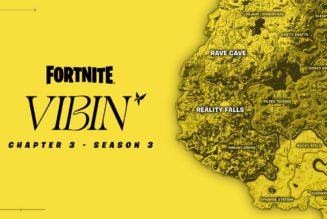
The biggest story of today is the creeping sense that April was in many ways another lost month in the COVID-19 response, with the average number of new cases rising slightly throughout the month to around 29,500 per day. Large swathes of the country are preparing to re-open for business even as all signs point to the likelihood that, for all of our collective efforts to send the novel coronavirus into decline, it merely plateaued. Charlie Warzel raised the grim and yet wholly plausible prospect that Americans will simply normalize COVID-19 deaths the way they have normalized deaths from gun violence. A few hours later the president all but confirmed it.
Around here we’re generally most interested in the push and pull between platforms and governments. But everything the platforms are working on right now, from exposure notification to symptom tracking and expanded testing, is downstream of federal inaction. And meanwhile, many basic questions about COVID-19 — how it works, how it spreads — are not fully or even mostly understood.
And so … would anyone object to me changing the subject? Here are three other storylines I’m following as they work their way through the big tech platforms and our democracy.
One, how’s Joe Biden doing? The presumptive Democratic nominee has had a bruising week, vehemently denying Tara Reade’s allegations of sexual harassment. And elsewhere, reporters are digging into the question of how a candidate should campaign in 2020. The answer would seem to be: digitally. But what does that mean?
At Politico, Alex Thompson profiles the 77-year-old candidate’s 25-person digital team, which has been experimenting with Upworthy-style inspirational posts in an effort to cultivate “Facebook empathy moms” and build a “stan culture.”
“Empathy is just as good at getting engagement,” Biden’s digital director Rob Flaherty said in an interview. “The suburban Facebook empathy moms that we think about a lot, those folks are just hungry for the contrast between the darkness of Donald Trump and the goodness of Joe Biden.”
Flaherty added that “if we did what the algorithms told us what to do all the time, it would be punching Trump in the face.” While “that will always be part of the toolkit,” a negative-first approach wouldn’t create the stan culture — or avid following — that campaigns need to develop. “The way you win online in 2020 is [by] building enthusiasm and enthusiastic online communities that talk to and bring people in.” The campaign argued the approach is beginning to work. Views across platforms have about doubled since February, rising from 27.4 million to 61.7 million in March and 51.1 million in April.
In the New York Times, David Axelrod and David Plouffe, former senior strategist and campaign manager for Barack Obama, lay out a blueprint for Biden that includes recruiting more platform-savvy Democratic stars as surrogates, creating a “virtual content production studio” with programming for every social platform, and planning for an online convention.
Meanwhile, Trump’s digital efforts are already quite sophisticated, as Stefan Smith noted on Twitter. Smith, the former director of online engagement for Pete Buttigieg, outlined the components of Trump’s campaign that go beyond Facebook ads: an app with push notifications, original programming, and gamification elements; nightly live shows with familiar characters from Trump world; and a family investment in the upstart conservative news network OANN. The reality show president is running a reality show campaign, and with the country in crisis, the ratings are very good.
The news isn’t all bad for Biden, who leads Trump in most national polls. But then, so did Hillary Clinton.
Two, should Facebook and Google fund the news business? Journalism has been in crisis for some time now, and the pandemic has made it worse. This is particularly true for local newspapers, which have seen advertising revenue plummet. And with much of the advertising business having migrated from newspapers to the Google/Facebook duopoly, a growing number of countries have sought to tax the latter to support the former.
Sara Fischer rounds up proposals from Western governments to prop up journalism in Axios. Australia, for example, might force Google and Facebook to pay publishers for the right to show snippets of their articles in feeds. On one hand, it’s heartening to see governments recognize the role a healthy press can play in sustaining good governance and democracy. On the other, for reasons Will Oremus lays out at OneZero, the proposals to date leave a lot to be desired. For example, all of this is true:
Facebook may have an even stronger argument against a scheme that would force it to pay for linking to publishers’ content. That’s because their articles are posted to the News Feed by users — including the publishers themselves — rather than being surfaced automatically by Facebook’s software. When France tried to require it to pay publishers to show previews of their articles in the News Feed, it simply stopped showing them unless the publisher agreed to waive the fee. Otherwise, when a user posted a link to that publication, Facebook would only show the URL with no accompanying headline or image. Again, that might hurt news organizations more than it hurts Facebook, whose primary appeal is not news but the social connections between its users.
Oremus suggests that governments explore models that would tax big tech platforms to fund public and nonprofit media, which we desperately need more of. And on Twitter, Fortune’s Jeff John Roberts offers another suggestion I love: “Google could provide an immense boost to news media if they built a one-click pay/subscribe button into Chrome, which would eliminate a huge amount of friction for readers.”
Google and Facebook get outsized benefits from the mostly free-to-them contributions of journalists, and some form of taxation to keep journalism in live strikes me as being in everyone’s best interest. And one-click subscriptions could go a long way to help, too.
Finally: can Twitter encourage us to be nicer online? More than two years ago, Twitter CEO Jack Dorsey announced that he was going to work to make the service nicer. “We’re committing Twitter to help increase the collective health, openness, and civility of public conversation, and to hold ourselves publicly accountable towards progress,” he tweeted.
History will probably not remember the period that followed as a turning point for public conversation. Twitter did take several steps to reduce harassment and make it easier to report bad actors, but it’s not clear that the median interaction between Twitter users is measurably more positive than it was before.
On Tuesday, Twitter announced a test designed to help: if you attempt to reply to a tweet using “harmful” language, the company will ask you if you’re sure you want to do that. Nick Statt wrote about it at The Verge:
Twitter describes it as a limited experiment, and it’s only going to show up for iOS users. The prompt that is now supposed to pop up in certain situations will give “you the option to revise your reply before it’s published if it uses language that could be harmful,” reads a message from the official Twitter Support channel.
The approach isn’t a novel one. It’s been used by quite a few other social platforms before, most prominently Instagram. The Facebook-owned app now warns users before they post a caption with a message that says the caption “looks similar to others that have been reported.” Prior to that change, Instagram rolled out a warning system for comments last summer.
I frequently write really mean tweets in the composer just to see how they look, and then delete them without tweeting, and find the process hugely cathartic. Building this feature into the system feels like a win, even if it puts us in the position of relying on an algorithm’s judgment once again. But it seems to be working well enough for Instagram — the company saw “positive results” from its own anti-bullying algorithms for comments last year, the company told me today, which led to it rolling out a similar feature for mean captions in December.
Pushback
Yesterday I quoted a CNBC piece that reported acceptances of job offers from Facebook had declined by up to 50 percent after the Cambridge Analytica data privacy scandal. Someone who would know reached out to tell me that the actual percentage decline was in the single digits. So: enough to cause concern, but not quite the crisis that a 50 percent decline might have suggested.
Virus tracker
Total cases in the US: 1,199,700
Total deaths in the US: 70,300
Reported cases in California: 56,732
Total test results (positive and negative) in California: 779,902
Reported cases in New York: 326,606
Total test results (positive and negative) in New York: 1,028,899
Reported cases in New Jersey: 130,593
Total test results (positive and negative) in New Jersey: 287,623
Reported cases in Massachusetts: 69,087
Total test results (positive and negative) in Massachusetts: 333,349
Data from The New York Times. Test data from The COVID Tracking Project.
Governing
⭐ The UK is one of the few countries building a contact-tracing app that will be incompatible with the contact-tracing API currently being developed by Google and Apple. And researchers are warning that the app likely won’t work as advertised. Here’s James Vincent at The Verge:
As The Register reports, iOS apps can only send Bluetooth signals when the app is running in the foreground. If your iPhone is locked or you’re not looking at the app, then there’s no signal. The latest versions of Android have similar restrictions, only allowing Bluetooth signals to be sent out for a few minutes after an app has closed. Such restrictions will block devices from pinging one another in close quarters, drastically reducing the effectiveness of any contact-tracing app.
Google and Apple can rewrite these rules for their own contact-tracing API because they control the operating systems. But for countries trying to go it alone, like the UK, the restrictions could literally be fatal. iPhone users with the app installed could interact with someone who is later diagnosed with COVID-19 and never know it, if their phone doesn’t keep a log of their interaction.
Critics are worried that India’s contact tracing app could become a government surveillance tool as the country lacks a federal privacy law. Some are asking if millions of Indians will be forced to download the app as the cost of returning to their lives. (Pranav Dixit / BuzzFeed)
Verily, the Alphabet company that President Trump said would soon roll out a nationwide testing system, is struggling to live up to the hype. Even the company’s vast resources can’t solve many of the problems, including finding testing sites and getting enough equipment. (Kristen V Brown and Gerrit De Vynck / Bloomberg)
The Supreme Court heard its first remote oral argument and streamed the event live online for the first time yesterday. Although there were a few minor glitches, the hearing went relatively smoothly. (Adi Robertson / The Verge)
The online car retailer Carvana gave employees an ultimatum between returning to work as COVID-19 deaths continue to mount, or lose their jobs. It’s a choice more workers will likely face and businesses begin to reopen. (Dave Jamieson / HuffPost)
Google removed nearly 1,000 malicious apps from the Play Store. Researchers said they could be used to surveil, monitor, and harass users. Now, some of these apps are coming back, and already have thousands of downloads. (Todd Feathers / OneZero)
Tumblr announced that it will now remove repostings of any blogs that were suspended for violating its policies around hate speech. The company found that most of the repostings weren’t providing “necessary counter-arguments” to the hate speech. (Sarah Perez / TechCrunch)
Facebook removed a small cluster of groups promoting the QAnon conspiracy, calling it part of a “coordinated inauthentic behavior” campaign around the 2020 election. It’s one of the first times Facebook has announced cracking down on QAnon content, and suggests the company views some of the campaigns to be deliberate manipulation — not just false information. (Adi Robertson / The Verge)
Animal Crossing fans say they’re getting into trouble on Facebook for talking about weeds — as in the pesky plants, not marijuana. Facebook’s community standards prohibit selling or buying non-medical drugs on the platform. (Patricia Hernandez / Polygon)
Industry
⭐A worker at Amazon’s Staten Island fulfillment center died of COVID-19. Workers have been calling for greater safety precautions at the facility since early March. And while the company has made changes, the number of COVID-19 cases continues to climb. Josh Dzieza reports at The Verge:
Managers notified several workers at JFK8 of the death yesterday. Amazon says the employee was last on site on April 5th and was placed on quarantine after he was confirmed to have COVID-19 on April 11th. “We are deeply saddened by the loss of an associate at our site in Staten Island, NY,” an Amazon spokesperson said. “His family and loved ones are in our thoughts, and we are supporting his fellow colleagues.”
JFK8 was the first of several Amazon facilities to have workers walk out in protest of the company’s handling of COVID-19, in late March. Following that walkout, Amazon made a series of changes to warehouse processes, including mandating social distancing and screening workers for fevers. In its quarterly earnings release last week, the company said it planned to spend $4 billion — equivalent to its expected operating profit — on its COVID-19 response. But workers say the safety precautions are still insufficient and that their jobs often require them being in close proximity.
Amazon is winning over vendors that had previously been wary of the online retail giant. Now that many brick and mortar locations are closing, brands have little choice but to sell on Amazon. Even the brands that had been avoiding the company. (Spencer Soper / Bloomberg)
Amazon’s free-to-play multiplayer game, Crucible, is launching on May 20th. It’s Amazon Game Studios’ first big-budget original game. (Nick Statt / The Verge)
Facebook is testing a new app in Peru called Discover that lets people browse text on any mobile website for free — that is to say, without data usage — for a certain amount of time. The move highlights the social media giant’s ambitions to expand internet access globally. (Queenie Wong / CNET)
A virtual prom hosted on Instagram Live gave more than 500 high school seniors a chance to celebrate the class of 2020 and participate in an important rite of passage. The event featured music and dancing, along with a digital red carpet and celebrity appearances from stars like Logan Allen and Max Jenkins. (Caitlin Fichtel / NBC)
Oculus is building a new version of its Quest standalone virtual reality headset. The device is facing potential delays due to the impact of COVID-19 on product development and the global supply chain. (Mark Gurman / Bloomberg)
Apple announced a free online-only version of its Worldwide Developers Conference will take place starting on June 22nd. WWDC was changed to an online event because of the “current health situation.” (Jay Peters / The Verge)
Tinder is going to launch its own in-app, one-on-one video chats later this year. It’s one of the largest features the brand has announced, and an especially impressive undertaking considering Tinder has millions of users, and video calls can be ripe for abuse. (Ashley Carman / The Verge)
Shares of Pinterest fell as much as 19 percent after the company reported disappointing user growth its first quarter results. (Salvador Rodriguez / CNBC)
Zoom CEO Eric Yuan wrote a blog post addressing rumors about the company’s relationship with China. Ben Thompson is still skeptical.
Americans without internet access are sitting outside closed cafes and libraries to get free connections. It shows the lengths people are going to combat the country’s digital divide — a problem the coronavirus has exacerbated. (Cecilia Kang / The New York Times)
Things to do
Stuff to occupy you online during the quarantine.
YouTube and Facebook are now competing to see who can host the most star-studded virtual commencement ceremony. You can see Oprah Winfrey, Awkwafina, and Lil Nas X at Facebook graduation on May 15th; Barack Obama, former first lady Michelle Obama, K-pop stars BTS, and Google CEO Sundar Pichai will headline YouTube graduation on June 6th. President Obama is doing another commencement address May 16th here.
Take a class from one of these eight education companies offering free classes during the pandemic.
Read these 25 coronavirus takes that aged very, very badly.
And finally…
In California, a neighbor took a page out of Monty Python and put up a sign saying her driveway area was a “Silly Walking Zone.
This is how neighbors reacted.pic.twitter.com/aQPTQvGfvy
— Goodable (@Goodable) May 3, 2020
Talk to us
Send us tips, comments, questions, and harmful replies: casey@theverge.com and zoe@theverge.com.








